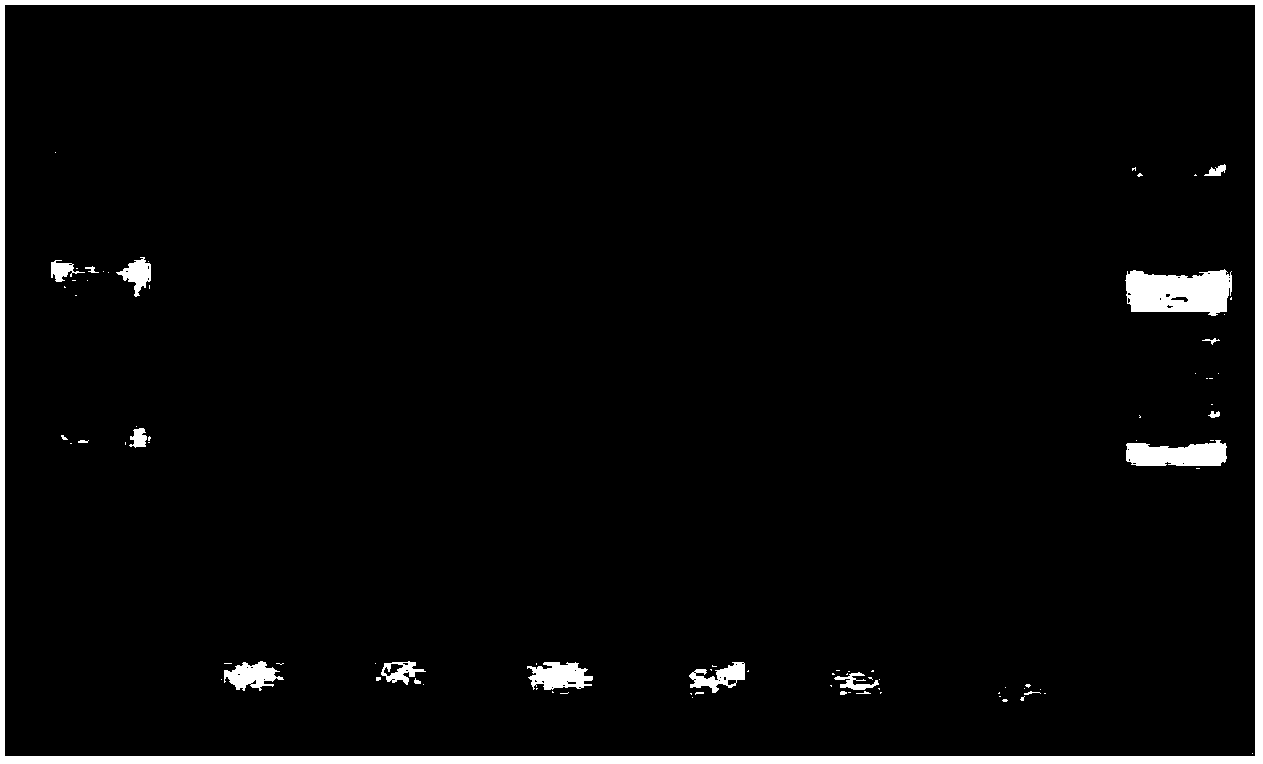Method for detecting SKA1 gene expression and purpose of siRNA thereof
A gene and target technology, applied in tumor diagnosis, the field of siRNA that inhibits the expression of SKA1 gene
- Summary
- Abstract
- Description
- Claims
- Application Information
AI Technical Summary
Problems solved by technology
Method used
Image
Examples
Embodiment 1
[0056] Example 1 siRNA design for SKA1
[0057] Through Invitrogen's online siRNA design software, four siRNA sequences with high evaluation on the website were selected. Through the NCBI website, the siRNA sequences were compared and analyzed (Blast analysis). These four siRNA sequences were found to have no significant homology to other genes except SKA1. The four siRNA sequences against SKA1 are listed in Table 1.
[0058] Table 1 SKA1 gene siRNA target sequence
[0059] Numbering
Embodiment 2
[0060] Example 2 Constructing a vector containing SKA1-siRNA
[0061] 2.1 Molecular synthesis
[0062] According to the sequences in the above table, the sense strand and antisense strand encoding siRNA were synthesized by Shanghai Sangon Biotech Co., Ltd. respectively. with ddH 2 O Dilute the synthesized sequence to a concentration of 100 μM for use.
[0063] The sequences of the four synthetic siRNA sense strands are:
[0064] 1. (SEQ ID NO.5):
[0065] 5'-CTAGCGGAGATGAGATCATTGTAATTCA AGAGATTACA ATGATCTCATCTCCTTTTTTGGAATTAAT-3';
[0066] 2. (SEQ ID NO.6):
[0067] 5'-CTAGCGAGGACTTACTCGTTATGTTATTCAAGAGATAACATAACGAGTAAGTCCTCTTTTTTGGAATTAAT-3';
[0068] 3. (SEQ ID NO.7):
[0069] 5'-CTAGCCCGCTTAACCTATAATCAAATTTCAAGAGAATTTGATTATAGGTTAAGCGGTTTTTTGGAATTAAT-3';
[0070] 4. (SEQ ID NO.8):
[0071] 5'-CTAGCGGGAGGACTTACTCGTTATGTTATTCAAGAGATAACATAACGAGTAAGTCCTCCCTTTTTTGGAATTAAT-3'.
[0072] The sequences of the synthesized 4 siRNA antisense strands are:
[0073] 5. (SEQ ID N...
Embodiment 3
[0125] Example 3 Virus packaging expressing SKA1-siRNA
[0126] 3.1 Plasmid intermediate extraction (intermediate extraction kit was purchased from Promega Biological Company, item number: A7640)
[0127] 1) Inoculate 50 μL of fresh bacterial liquid into 15-50 mL of LB medium (containing appropriate amount of antibiotics), and incubate with shaking at 37°C for 14-16 hours. Centrifuge at 5,000×g for 10 minutes at room temperature to collect the cells, and remove as much supernatant as possible.
[0128] 2) Add 2.5mL of BufferA1 to which RNase A has been added, and resuspend the cells.
[0129] 3) Add 2.5mL Buffer B1, invert gently 5-10 times to mix evenly, then let stand for 2-5 minutes until the solution becomes viscous and clear.
[0130] 4) Add 3.0mL Buffer C1, invert immediately 5 times, shake vigorously by hand 3-5 times to mix thoroughly, and white flocculent precipitate appears at this time.
[0131] 5) Transfer the centrifuge tube to a high-speed centrifuge and centr...
PUM
 Login to View More
Login to View More Abstract
Description
Claims
Application Information
 Login to View More
Login to View More - Generate Ideas
- Intellectual Property
- Life Sciences
- Materials
- Tech Scout
- Unparalleled Data Quality
- Higher Quality Content
- 60% Fewer Hallucinations
Browse by: Latest US Patents, China's latest patents, Technical Efficacy Thesaurus, Application Domain, Technology Topic, Popular Technical Reports.
© 2025 PatSnap. All rights reserved.Legal|Privacy policy|Modern Slavery Act Transparency Statement|Sitemap|About US| Contact US: help@patsnap.com



